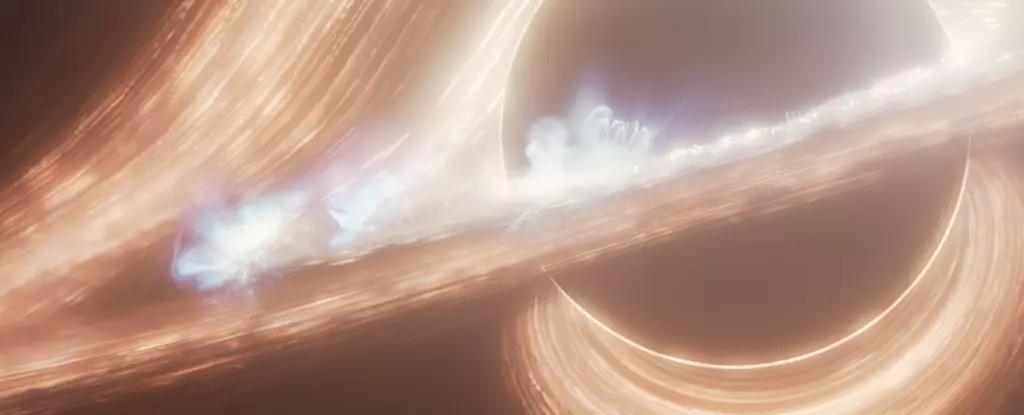Astronomers have long been fascinated by the supermassive black hole known as Sagittarius A*, residing at the heart of our Milky Way galaxy. Though it does not exhibit the insatiable appetite seen in more distant black hole counterparts, recent observations from NASA’s James Webb Space Telescope (JWST) reveal an electrifying display of cosmic phenomena surrounding this mystery-laden abyss.
The findings shared in The Astrophysical Journal Letters present dramtically improved insights into the dynamic environment surrounding Sagittarius A*. Utilizing the Near-Infrared Camera (NIRCam) on JWST, researchers documented an array of sporadic cosmic flares emerging from the black hole’s accretion disk. This extraordinary disk contains hot gas that matures into highly energetic outbursts, with an astonishing frequency of five to six major flares occurring daily, interspersed with numerous minor bursts.
Lead author Farhad Yusef-Zadeh from Northwestern University encapsulates the essence of their research with excitement, stating, “Our data revealed a whimsical, ceaseless fluctuation of brightness, culminating in sudden, pronounced bursts. Yet, intriguingly, this behavior lacked predictability.” This unpredictability not only highlights the bewildering nature of black hole surroundings but also enhances our understanding of cosmic interactions occurring at the galactic core.
The Mechanisms Behind the Flares
The research team proposes two distinct processes fueling this celestial light show, a revelation that sheds light on the previously obscured activity surrounding supermassive black holes. The smaller, more frequent flares likely stem from turbulence within the accretion disk itself. This turbulence compresses the disk’s hot, magnetized gases, triggering brief outbursts of radiation reminiscent of solar flares released by our own Sun. Yusef-Zadeh explains, “The phenomena resonate with solar flares, where magnetic fields become compressed before erupting. However, the dynamics at work near a black hole are profoundly more energetic and extreme.”
On the other hand, larger bursts may result from magnetic reconnection events, where colliding magnetic fields lead to robust emissions of particles propelling outward at relativistic speeds. This phenomenon can be compared to the static electricity experienced in daily life, but magnified in intensity, given the unique conditions present around black holes.
One of the most astonishing discoveries from this study pertains to the behavior of light from the recorded flares at different wavelengths. Observations reveal that the brighter events at shorter wavelengths exhibited a slight lead in brightness over their longer wavelength counterparts. This delay, ranging from mere seconds to approximately 40 seconds, is unprecedented in astrophysical research, suggesting a nuanced interplay of physical processes occurring within the black hole’s nearby environment.
Yusef-Zadeh asserts, “This could indicate that particles being expelled from flares maintain their energy levels differently based on wavelength, spiraling around magnetic field lines in a phenomenon reminiscent of cosmic synchrotron radiation.” Such insights not only deepen our understanding of flares produced by Sagittarius A* but also forge connections with fundamental principles of astrophysical behavior.
Moving forward, the research team hopes to utilize JWST for extended observation periods, ideally over 24 continuous hours. This ambition is rooted in the need to combat the noise that may obscure crucial details in weaker flaring instances. A longer observational window would significantly enhance the clarity of data collected, enabling scientists to identify features that previously evaded detection.
Yusef-Zadeh concludes emphatically, “Amplifying observation time is pivotal for unveiling the subtlest activities occurring in such a tumultuous region. Isolating these weak flares from background noise is critical to capturing the dynamic behavior of Sagittarius A*.” As we proceed into this new era of observational astronomy, the potential to unravel the mysteries of our galaxy’s supermassive black hole will inevitably propel our quest for knowledge about the cosmos.
With the powerful tools provided by JWST, the enigmatic environment of Sagittarius A* stands poised to reveal secrets that will deepen our understanding of black holes and the intricate workings of our Universe.


Leave a Reply